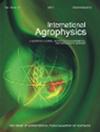Effects of the returning organic wastes on soil enzymes and microbial quantity in dryland farming
IF 1.7
4区 农林科学
Q2 AGRONOMY
引用次数: 0
Abstract
Corn straw and animal manure are high-quality organic materials which contain a large amount of organic matter as well as nitrogen (N), phosphorus (P), and other trace elements necessary for plant growth and agricultural sustainability (Kumar et al., 2018). Statistical data have shown that every year, about 700 million tonnes of crop straw and 3.8 billion tonnes of animal manure are produced as agricultural waste in China (Wang et al., 2017; Wang et al., 2020). The burning of straw and the inappropriate disposal of animal manure leads to a waste of resources and environmental pollution (Ji, 2015). Returning straw to the field is an effective practice that facilitates the management of agricultural residues (Blumfield et al., 2003). Hou et al. (2012) reported that the application of straw mulch is a traditional agricultural practice used to reduce evaporation and improve crop yields, however, the traditional ways of applying mulch do have some shortcomings, such as the slow decomposition rate of the straw which leads to a low emergence rate for seedlings (Hu et al., 2016). Lafond et al. (2009) found that straw mulch had no significant effects on crop production and soil quality. Therefore, this research seeks to test a new method of returning straw, which may serve to alleviate the shortcomings of the traditional straws techniques in order to improve sustainable agricultural production. © 2021 Institute of Agrophysics, Polish Academy of Sciences有机废弃物回用对旱地农业土壤酶和微生物数量的影响
玉米秸秆和动物粪便是优质有机材料,含有大量有机物以及植物生长和农业可持续性所需的氮(N)、磷(P)和其他微量元素(Kumar等人,2018)。统计数据显示,中国每年约有7亿吨农作物秸秆和38亿吨动物粪便作为农业废弃物产生(Wang et al.,2017;Wang等人,2020)。秸秆焚烧和动物粪便处理不当造成资源浪费和环境污染(季,2015)。将秸秆还田是一种有效的做法,有助于农业残留物的管理(Blumfield等人,2003年)。Hou等人(2012)报道称,秸秆覆盖是一种传统的农业实践,用于减少蒸发量和提高作物产量,然而,传统的覆盖方式确实存在一些缺点,例如秸秆分解速度慢,导致幼苗出苗率低(Hu et al.,2016)。Lafond等人(2009)发现,秸秆覆盖对作物生产和土壤质量没有显著影响。因此,本研究旨在测试一种新的秸秆还田方法,以缓解传统秸秆还田技术的不足,提高农业可持续生产水平。©2021波兰科学院土壤物理研究所
本文章由计算机程序翻译,如有差异,请以英文原文为准。
求助全文
约1分钟内获得全文
求助全文
来源期刊

International Agrophysics
农林科学-农艺学
CiteScore
3.60
自引率
9.10%
发文量
27
审稿时长
3 months
期刊介绍:
The journal is focused on the soil-plant-atmosphere system. The journal publishes original research and review papers on any subject regarding soil, plant and atmosphere and the interface in between. Manuscripts on postharvest processing and quality of crops are also welcomed.
Particularly the journal is focused on the following areas:
implications of agricultural land use, soil management and climate change on production of biomass and renewable energy, soil structure, cycling of carbon, water, heat and nutrients, biota, greenhouse gases and environment,
soil-plant-atmosphere continuum and ways of its regulation to increase efficiency of water, energy and chemicals in agriculture,
postharvest management and processing of agricultural and horticultural products in relation to food quality and safety,
mathematical modeling of physical processes affecting environment quality, plant production and postharvest processing,
advances in sensors and communication devices to measure and collect information about physical conditions in agricultural and natural environments.
Papers accepted in the International Agrophysics should reveal substantial novelty and include thoughtful physical, biological and chemical interpretation and accurate description of the methods used.
All manuscripts are initially checked on topic suitability and linguistic quality.
 求助内容:
求助内容: 应助结果提醒方式:
应助结果提醒方式:


